Suntory Time
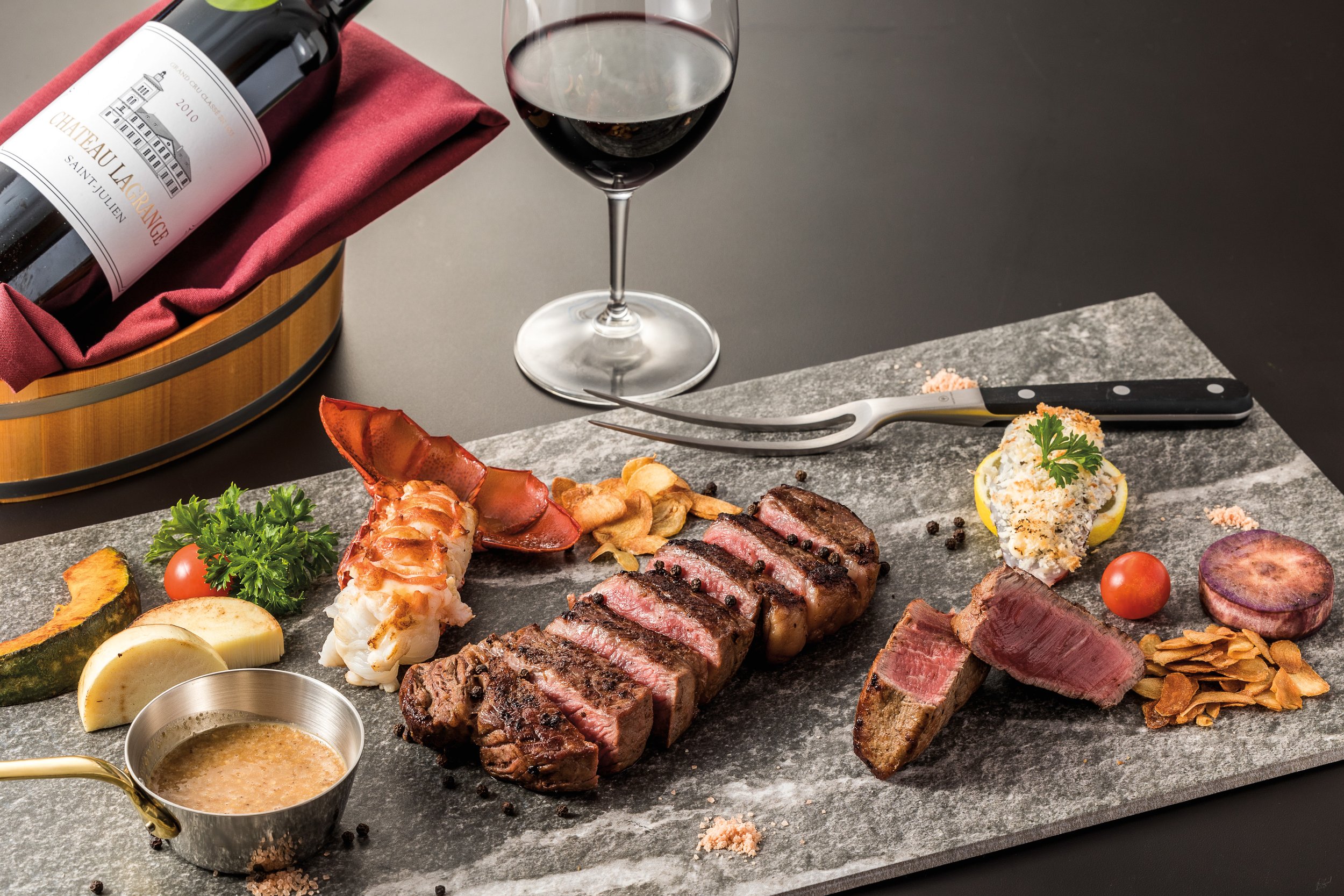

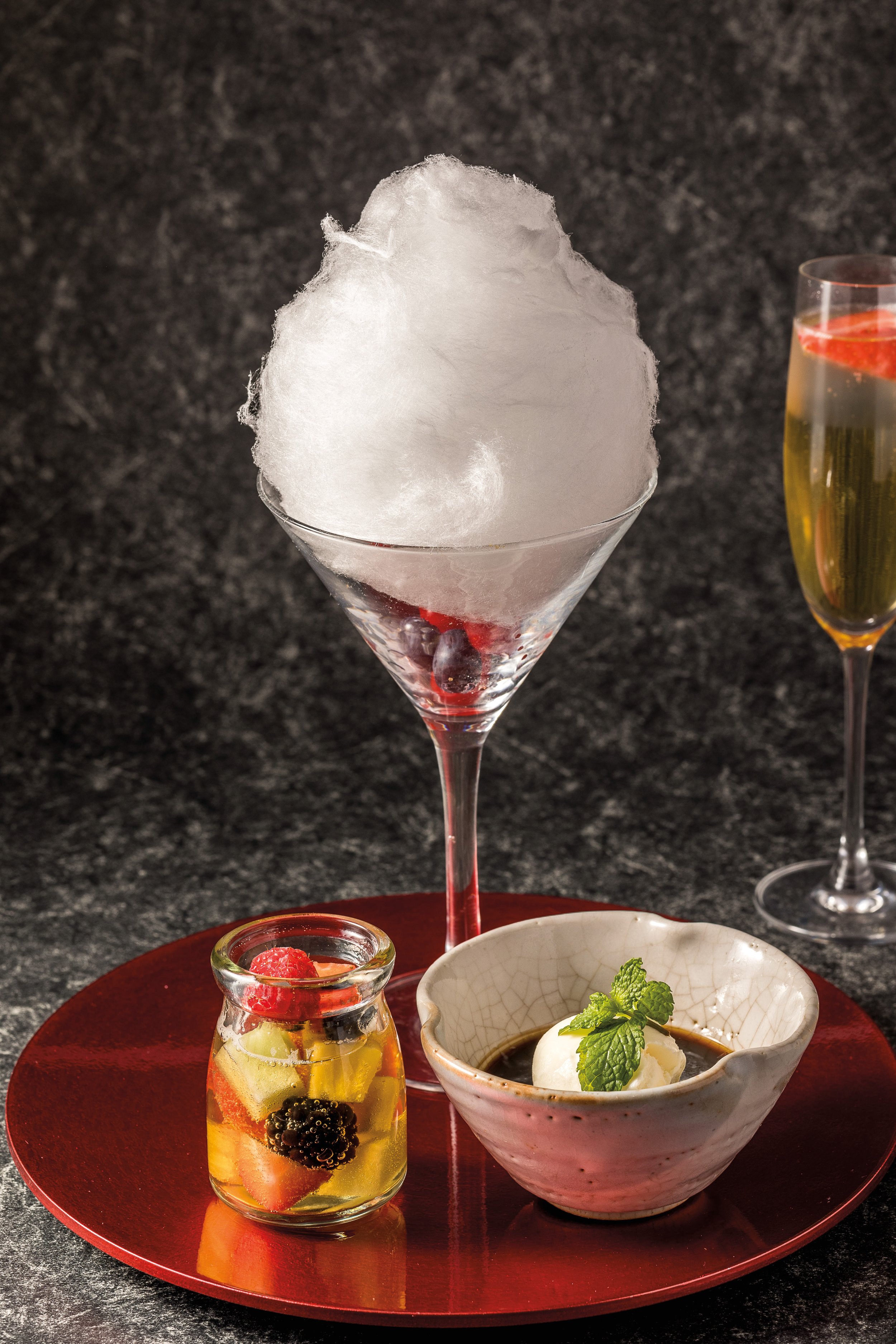
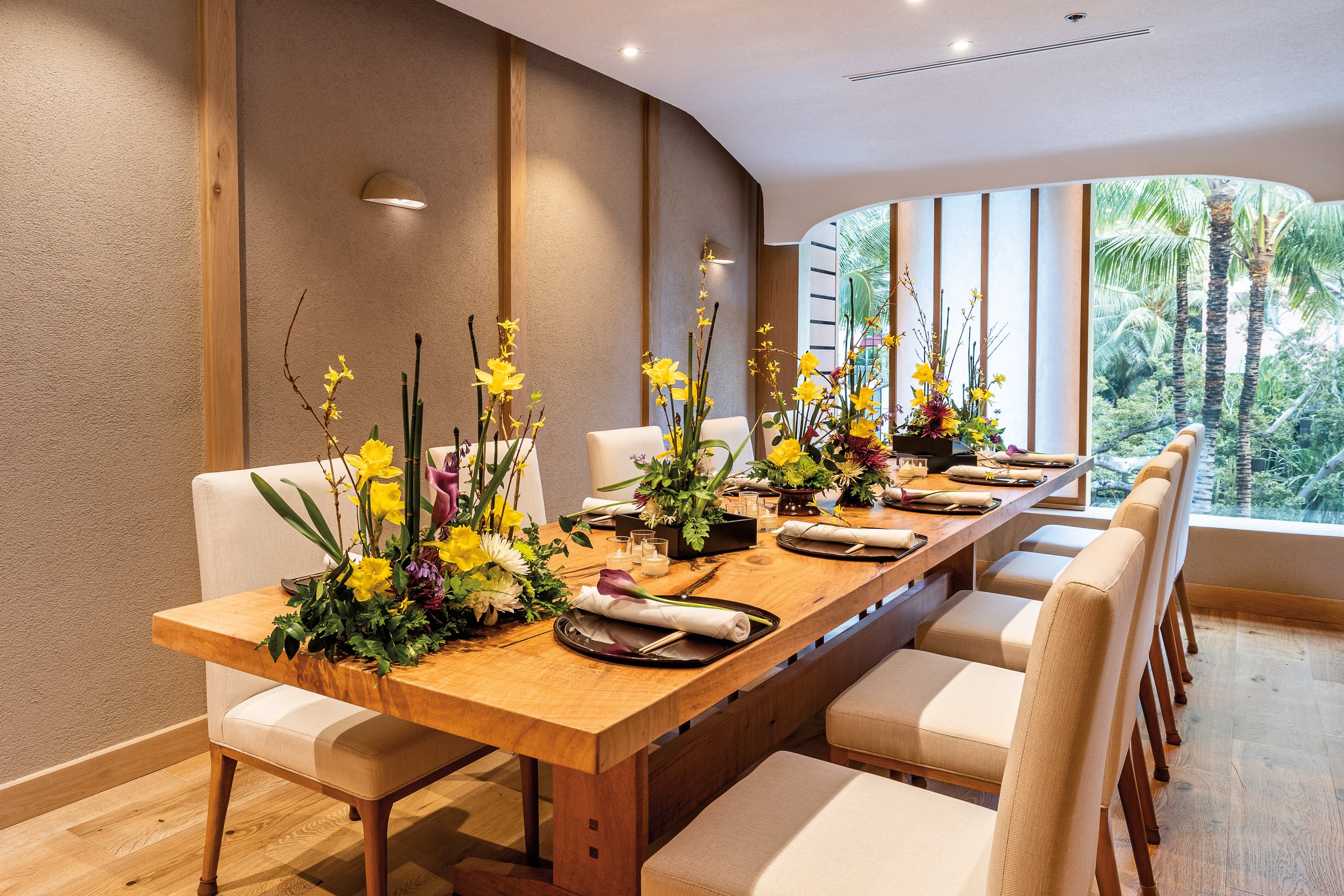
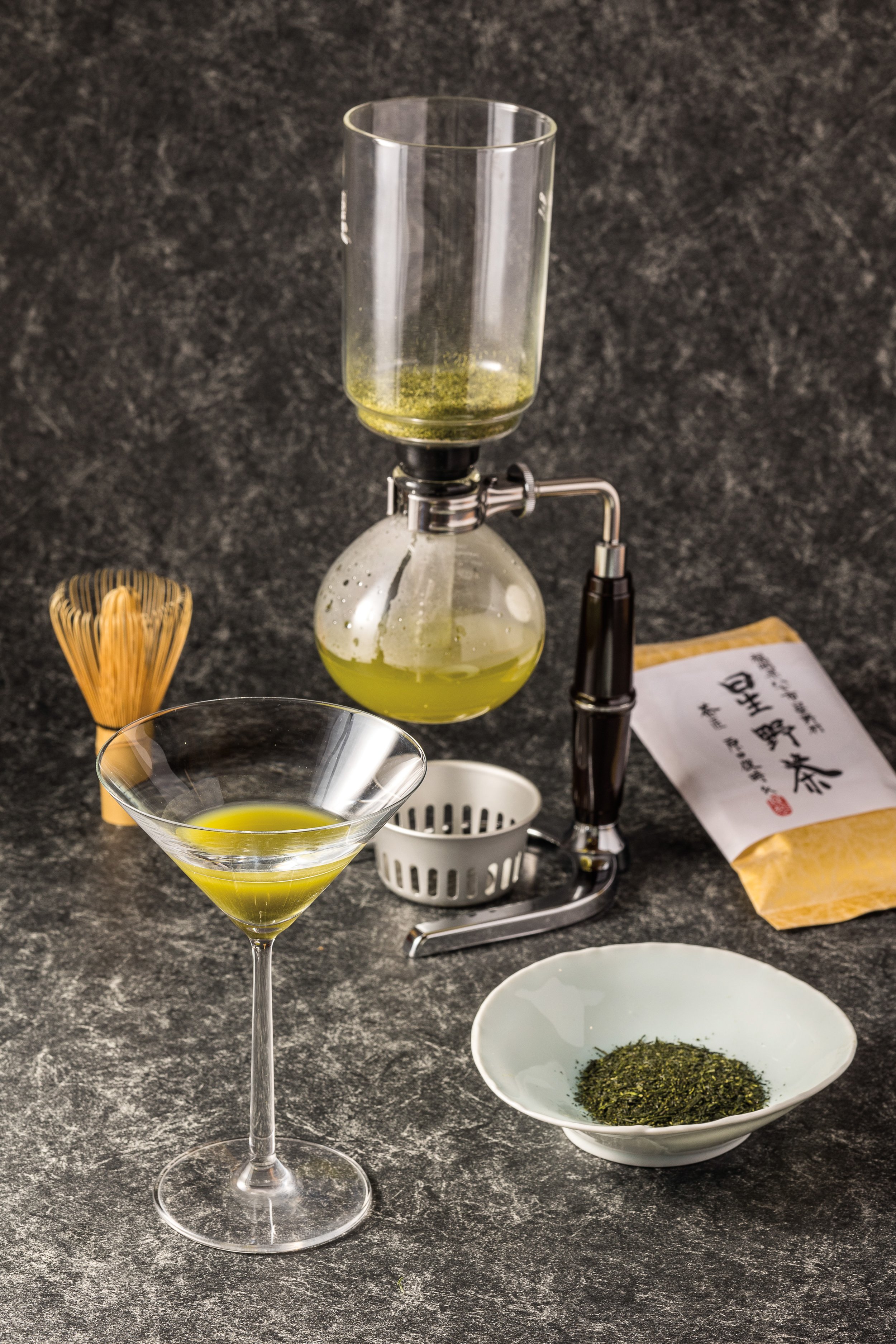
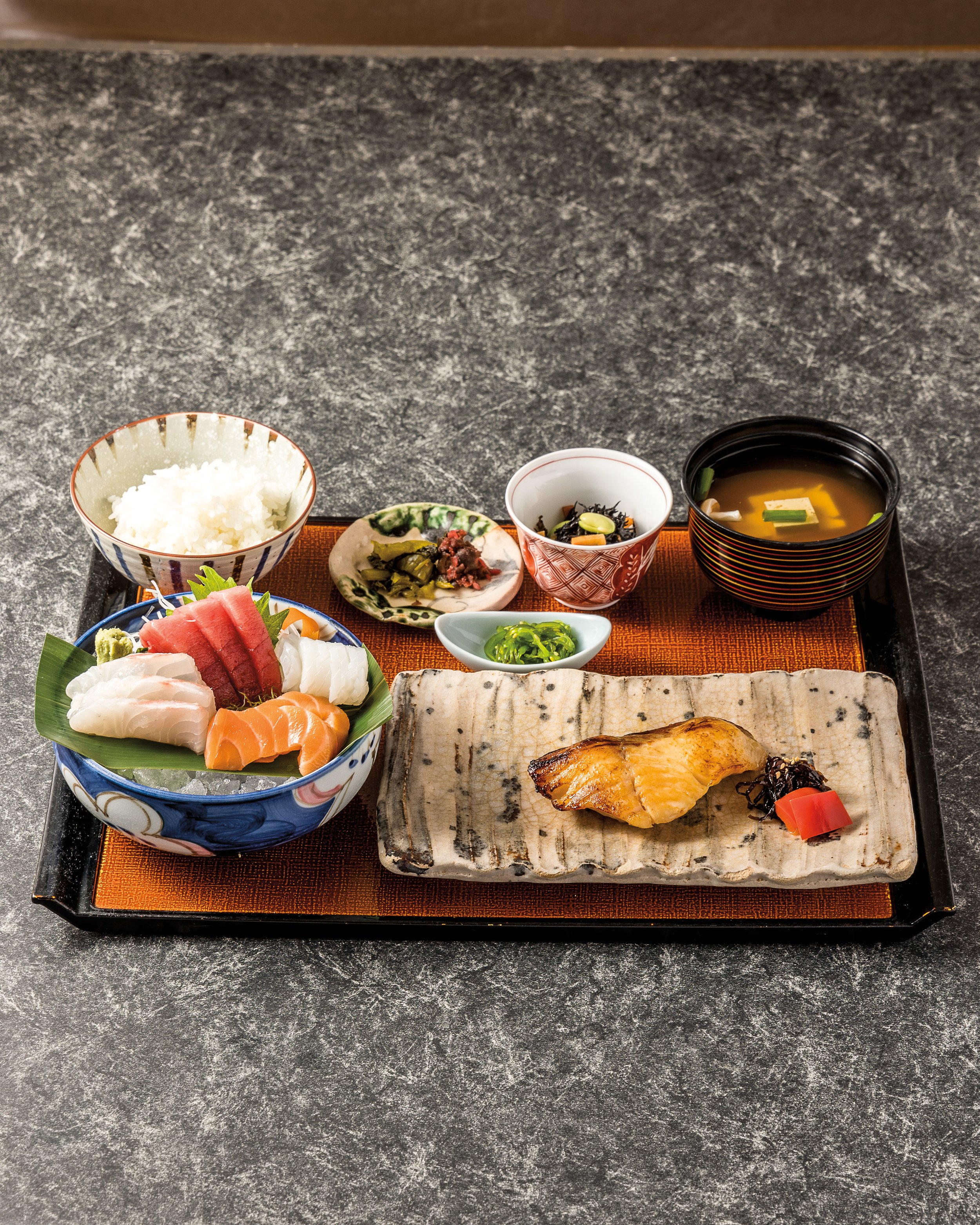
There is no space wasted here in the recently renovated Restaurant Suntory. That’s not to say the high-end Japanese restaurant is crammed with decor or furnishings. In fact, it’s quite the opposite. The interior design celebrates minimalism and shibui — the Japanese term for a particular aesthetic of simple, subtle and unobtrusive beauty. Opening its doors way back on September 15, 1980, Restaurant Suntory is the Royal Hawaiian Center’s oldest tenant but has managed to stay more than relevant with its steady schedule of renovations and modernizations.
Leaving the hustle and bustle of the Royal Hawaiian Center behind, entering Restaurant Suntory immediately greets diners with a calming Far Eastern atmosphere. Hardwood flooring and walls have been specifically picked out for their warm, earthy tones and naturally aged appeal. Bottles of premier Suntory liquors line the walls and add an air of elegance to the entire space without feeling intrusive. Many of these new visual features were introduced to the restaurant in its latest renovation, which were recently completed and had started in the fall of 2021, costing the establishment just over two million dollars.
While I’m here for the washoku course, Restaurant Suntory’s thoughtful interior design was planned for the concept of having multiple restaurants in one space. The teppanyaki area — which has guests seated around a chef cutting, cooking and crafting entire meals on a large flat iron griddle — promotes intimate seating arrangements where diners can get a good look at what their chef is doing. And the sushi bar section — named Sushi Tokiwa — is an elegant space that truly capitalizes on the cutting beauty of shibui, with just 12 seats perfectly placed around a contemporary counter space. Meals are precisely planned by master sushi chefs, with each piece of fish and rice building off one another for a masterclass meal.
Washoku is another name for traditional Japanese cuisine and is used to distinguish itself from yoshoku, Japan’s western-influenced fare. Showcasing centuries of cooking practices and traditional food and ingredients used in Japan before Western contact, the washoku course is a brilliant display of the country’s cuisine and aesthetic sensibilities. My appetizer course — I’ve ordered the recommended set, “HIBIKI” — comes in the form of a delicate pairing of flavors, from macadamia nut tofu to pickled veggies.
Like the restaurant itself, no space is wasted in terms of presentation. The dishes are laid out in a charming form of Japanese minimalism, with each part of the meal or course coming in its own perfectly sized compartment. Again, shibui is used to great effect here, and the small touches that are added — a sprig here or fern there that serve only as visual garnishing — truly elevate the meal to an edible work of art.
If you’re not used to traditional Japanese cuisine, prepare your palate for a journey east. Dishes like the steamed custard chawanmushi — an egg custard meal made with savory fillings — and kamameshi — a steamed rice appetizer made with boiled seasonal ingredients — are a welcome surprise to my westernized tastes. The menu and courses come from the seasoned mind of Go Kamikubo, executive chef of Restaurant Suntory.
With more than 20 years of experience in the Japanese culinary industry, Kamikubo has developed an understanding of the flavors and techniques that are unique to Japan’s culinary world. It’s no wonder that every step on the washoku course continues to build upon itself until the very last plate.
Ending with its best foot forward, the two main entrées of my culinary voyage are the butterfish and the A5 wagyu beef. First thing’s first, the butterfish literally melts in your mouth. The fish comes straight from Japan, and you can taste the raw, unadulterated freshness with every bite. A plate of rice has also been prepared to accompany the butter- fish, and an additional dashi (broth) is supplied separately for diners to try the entre?e with or without it. But it’s the wagyu that truly demands your attention. Being served some of the highest-grade wagyu with a miniature hot plate — that is actually lit by a real fire under a small black cooking bowl — is almost intimidating. Accompanied by a roasted sesame dipping sauce, the quality of the beef can be enjoyed equally on its own or garnished, it’s almost unreal how tender and flavorsome the meat is.
A celebration of Japanese cuisine, Restaurant Suntory’s washoku course and renovations make it clear that the restaurant — which is now just over 40 years old — plans to stay.
Restaurant Suntory, 2233 Kalakaua Ave., Honolulu, 808.922.5511, restaurantsuntory.com
